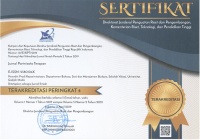Pelestarian Cagar Budaya Melalui Pemanfaatan Pariwisata Berkelanjutan
Khofif Duhari Rahmat(1*)
(1) Balai Pelestarian Situs Manusia Purba Sangiran
(*) Corresponding Author
Abstract
The tourism industry is one industry that will not run out and will continue to grow. The Indonesian government realizes that the tourism industry is one of the industries that contributes to national development. The existence of tourism as an industry also brings negative impacts. In recent decades a concept of tourism planning and management that was born due to anxiety about the negative impact of the tourism industry. The last few years the issue of sustainable tourism has increased amid the negative impacts felt almost in most tourist attractions, especially cultural heritage-based attractions. Through the concept of sustainable tourism, cultural heritage is not just a tool for simple business practices that only attracts tourists who come to visit and then earn foreign exchange, but rather how this cultural heritage can contribute to environmental quality (saujana culture); public welfare; national and regional economy; increasing scientific insight; and the preservation of cultural heritage itself.
Keywords :
tourism, preservation, heritage, sustainable tourism
Keywords
tourism; preservation; heritage; sustainable tourism
Full Text:
PDFArticle Metrics
Refbacks
- There are currently no refbacks.
Copyright (c) 2021 Khofif Duhari Rahmat

This work is licensed under a Creative Commons Attribution-ShareAlike 4.0 International License.













